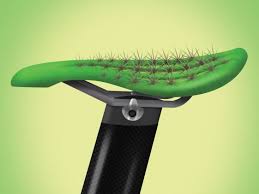When is it a bit more than Saddle Soreness? Cyclists Syndrome!

It’s normal to feel a bit sore after getting back in the saddle—especially if you’ve had some time off the bike. But what if you’re cycling regularly and start to notice persistent pain, numbness, or discomfort that doesn’t go away?
This might be more than just typical saddle soreness. It could be Cyclist’s Syndrome, medically known as Pudendal Neuralgia.
What Is Cyclist’s Syndrome (Pudendal Neuralgia)?
Cyclist’s Syndrome refers to a condition where the Pudendal Nerve, which runs through the pelvis and supplies the genital area, rectum, and pelvic floor, becomes irritated or compressed. This can occur due to prolonged pressure from a bike saddle or muscle tightness in the pelvic region.
Common symptoms include:
- Burning, pain, or numbness in the perineal (crutch) area
- Symptoms appearing 12–24 hours after a ride
- Changes in bladder or bowel frequency or control
- In some cases, erectile dysfunction
Because the symptoms affect sensitive areas, many people delay seeking help—despite the fact that this condition is more common among cyclists than you might think.
What Causes Pudendal Neuralgia in Cyclists?
The condition is often caused by direct pressure on the Pudendal Nerve from prolonged time in the saddle or by compression from tight pelvic muscles, such as the gluteals or deep hip rotators. These issues can gradually build over time with repetitive cycling, especially if your bike setup isn’t optimal.
What Should You Do If You Suspect Cyclist’s Syndrome?
If you’re experiencing persistent perineal pain or any changes in urinary or bowel function, the first step is to consult a urologist to rule out other underlying medical conditions.
Once you’ve been cleared of any medical issues, a physiotherapist at MGS Physiotherapy can help address the cycling-related aspects of your symptoms.
How Can Physiotherapy Help Cyclist’s Syndrome?
At MGS Physio, we offer a range of strategies to help manage and resolve Pudendal Neuralgia:
- Bike setup and ergonomic advice to reduce saddle pressure on the nerve
- Seat recommendations to improve weight distribution and comfort
- Activity planning to adjust riding frequency and duration safely
- Targeted exercises to address pelvic muscle imbalances and release tight gluteal or pelvic floor muscles
If conservative treatment doesn’t provide sufficient relief or symptoms are severe, surgical options to decompress the nerve may be explored with your medical team.
Don’t Ignore the Symptoms
If you’re noticing unusual or persistent symptoms after cycling, don’t ignore them. While Cyclist’s Syndrome can be uncomfortable to talk about, early intervention can make a big difference in your comfort, performance, and quality of life.
If you’re unsure whether your saddle soreness is something more, reach out to our team at MGS Physiotherapy for a confidential and supportive assessment.
Frequently Asked Questions – Cyclist’s Syndrome
